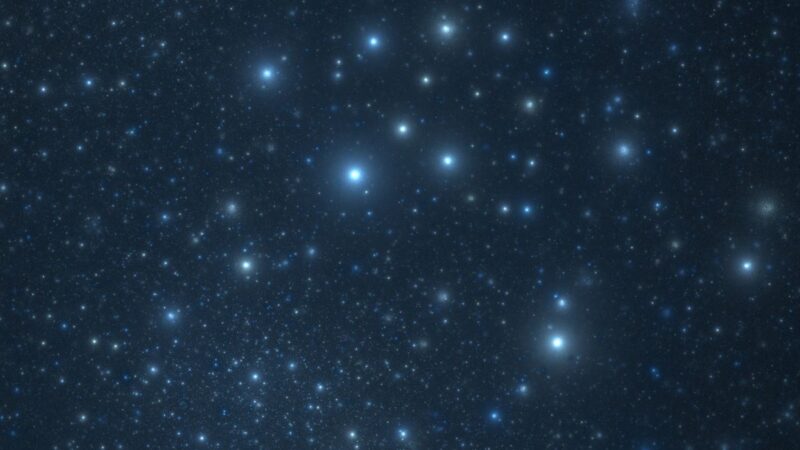[NTD, Beijing, June 30, 2022]Researchers have discovered five peculiar clusters of blue stars from Hubble observations. They do not exist in the same way as any known group of stars evolves.
The five star clusters are located in the constellation Virgo, and each cluster is about the size of a dwarf galaxy. One of them is SECCO1, also called AGC 226067. What they have in common is that they are a group of young stars, none of which are older stars, but each is very far away from any surrounding galaxy, for example, the nearest galaxy is 300,000 light-years away. This makes it difficult for scientists to determine where these solitary swarms of stars came from.
“These blue clusters of stars are like oasis in the desert,” said Michael Jones, a postdoctoral researcher at the University of Arizona, one of the principal investigators.
The researchers also found that there is no atomic hydrogen inside the five star groups. Scientists now believe that atomic hydrogen is an important ingredient in the birth of new stars in galaxies. Atomic hydrogen will become a cloud of molecular hydrogen gas, and finally new stars will be born.
Jones said: “We observed a lack of atomic gas clouds in these systems, but that doesn’t mean that there are no molecular gas clouds. In fact, there must be some molecular gas clouds there because they are still producing new stars. These stellar groups are mainly composed of The combination of nova formation and the lack of gas suggests that these systems must have lost the gas they contained recently.”
Another peculiarity of these five star groups is that they are rarely seen in older stars. Most galaxies have older stars, usually red ones.
“Stars that are born red are generally less massive, but they live longer than blue stars,” Jones said. “Blue stars burn faster and die faster. So[galaxies evolve later]are only red. star.”
In addition to this, the stars within these five stellar clusters are rich in metal elements. Based on this clue, the researchers came up with guesses about the origin of these stellar clusters.
Any element heavier than helium in astronomy is called a metallic element. Scientists believe that in larger galaxies, the material after the death of the star is reused to create new stars, and in this repeated process, heavier and heavier elements are continuously synthesized.
So, clues that the stars in these five clusters are metal-rich suggest that the gas that gave birth to these stars should have been stripped from the large galaxies.
Scientists think there are at least two scenarios for gas being stripped from large galaxies. One is called tidal stripping. When two large galaxies pass by, some of that gas and stars are stripped from the galaxies under the force of gravity.
The other is called “ram-pressure stripping”. “It’s like you’re lying flat in a swimming pool,” Jones said. “When a galaxy crashes head-on into a constellation (group of galaxies) rich in hot gas, the gas in it will fly out of the back of the galaxy. We think that , these stellar populations are born from the gas stripped in this way.”
One reason the researchers think the five stellar clusters are from the second scenario is that, as mentioned earlier, these clusters are all very distant from the nearest galaxies. It takes a lot of impact velocity to strip these gases and substances this far. The speed of tidal force peeling is much lower than that of shock pressure peeling.
“The findings of this study provide us with new information about how stars and gas circulate in the universe,” said University of Arizona astronomy professor David Sand, the other lead author of the study.
“We think this shock pressure stripping process, to a certain extent, has a great influence on the transformation of spiral galaxies into elliptical galaxies. So understanding this process enriches our understanding of the evolution of galaxies.”
The research was published on the preprint website arXiv on May 3 and has been accepted for publication in The Astrophysical Journal.
(Transfer from The Epoch Times/Editor-in-charge: Ye Ping)
URL of this article: https://www.ntdtv.com/b5/2022/06/29/a103467629.html
